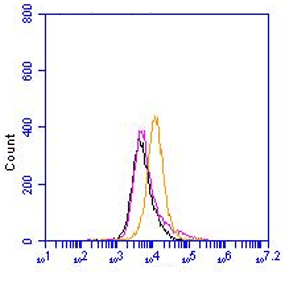
MHC class I, Mouse, mAb ER-HR52
€133.00 – €320.00
The monoclonal antibody ER-HR52 specifically reacts with major histocompatibility complex (MHC) class I antigens of the mouse and, therefore, it is a valuable tool for studying cytotoxic T-cell interactions with class I positive antigen presenting cells. The primary immunological function of MHC molecules is to bind and present antigenic peptides on the surfaces of cells for recognition by the antigen-specific T cell receptors (TCRs) of lymphocytes. MHC class I molecules are expressed on the surfaces of most cells and are recognized by CD8-positive cytotoxic T-cells, an essential step for initiating the elimination of virally infected cells by T-cell-mediated lysis. MHC class I molecules are heterodimers composed of an alpha (44kD) and a beta (beta microglobulin, 11 kD) subunit. The first two structural domains of the alpha subunit associate to form the peptide-binding pocket. The monoclonal antibody ER-HR52 reacts with MHC class I, an antigen that is expressed by all somatic cells at varying levels. Lymphocytes are highly positive, whereas fibroblasts and neurons show only a low level of antigen expression. ER-HR52 recognizes murine MHC class I molecules on the surface of cells of the following haplotypes: H-2Db, H-2Dw16, H-2d,p,q. Weaker reactivity is found in mice of the following haplotypes: H-2f,r,s,w17, w23,w27. MHC class I molecules of other haplotypes are not recognized by ER-MP52. There is no cross-reactivity with human MHC class I molecules.




